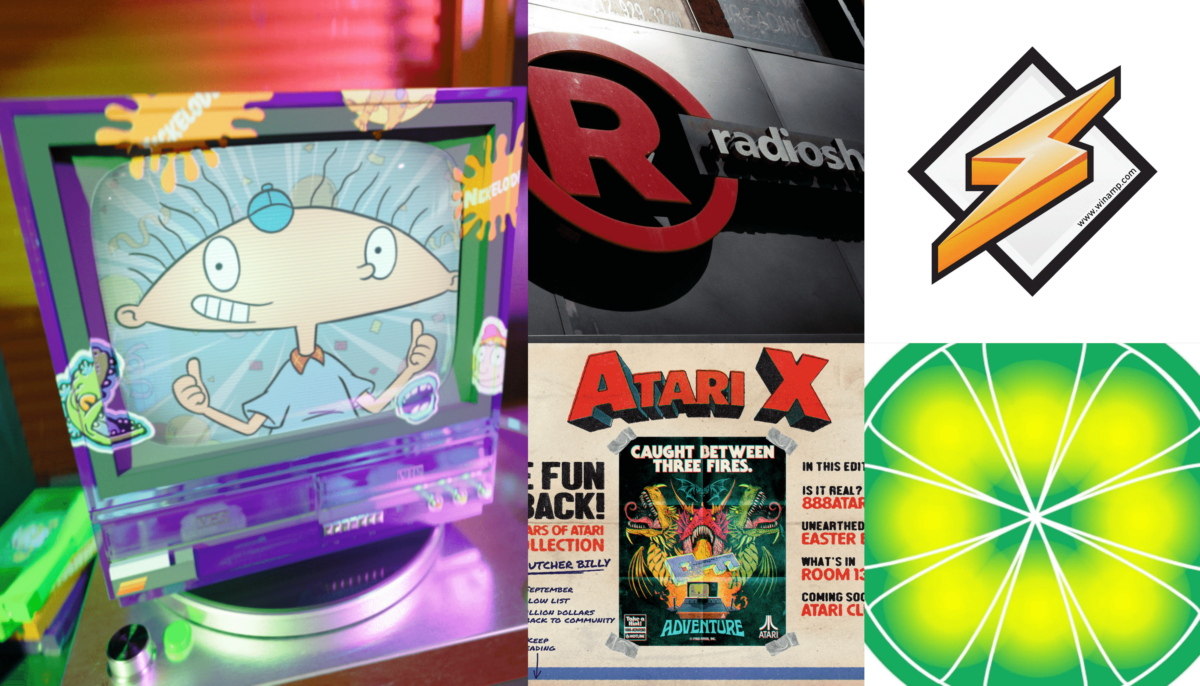Every week we simplify the market into key points so you can stay up to date on market trends, upcoming drops, top project guides and much more!
BY Jex Exmundo
December 15, 2022
Undoubtedly, NFTs have provided a route for countless young, up-and-coming artists and musicians to finally make a living from their passion and craft. Even legacy brands have gotten in on the fun, utilizing this revolutionary new technology to engage their market in a deeper and more meaningful way. Through the usage of smart contracts — one of the features that sets NFTs apart — brands can even enable a host of unique utilities for their buyers down the road.
However, a reoccurring story we’ve seen in the brief history of NFTs in the public limelight is how classic, sometimes long-defunct brands have looked to this novel technology as a way back into the public conversation. Here’s a quick rundown of recent NFT launches that have induced the biggest nostalgia trips in the community.
So, @limewire is “back” as an NFT marketplace, and they dropped a killer ad full of nostalgia for their reintroduction.
2022 is wild. pic.twitter.com/yTiZxaXirC
The music industry’s transition from radio and CD to on-demand streaming wasn’t instantaneous. Before platforms like Spotify became synonymous with listening to music, consumers found themselves drawn to a simpler, more cost-efficient way of curating their personal music libraries: peer-to-peer file-sharing platforms. And everyone’s platform of choice? Limewire. Reportedly, the file-sharing client was installed on over one-third of all computers worldwide during its peak in 2007.
Of course, given the legal gray-zones these platforms inhabited, LimeWire’s time in the sun didn’t last long. Following the release of its final update in 2010, the site began to fade out of public consciousness as quickly as it entered.
That’s what made LimeWire’s July 2022 announcement such a trip. The brand was back but in a slightly different form. Now it’s an NFT marketplace, with an emphasis on distributing music NFTs. Since that announcement, it’s maintained an active presence in the music NFT space, even curating a series of virtual events on the platforms such as Decentraland.
Although Nickelodeon’s still around, with its revenue largely carried by an upbeat aquatic sponge, its cultural mindshare pales in comparison to what it was in the 1990s. Through the decade, some of the greatest cartoons ever made premiered, giving an entire generation of kids and teens fond memories to look back on. Hey Arnold! spoke to the ups and downs of living an inner-city childhood, The Wild Thornberries spoke to every child’s fantasy of being able to talk to animals, and Ren and Stimpy gave everybody nightmares.
Partnering with RECUR, Nickelodeon looked to preserve the most precious parts of its legacy on the blockchain through the July launch of its first-ever NFT collection. The initial public drop consisted of 10,000 packs, each containing various one-of-one PFP NFTs featuring characters from two of Nickelodeon’s most beloved 90s shows: Rugrats and Hey Arnold!
The Netflix hit Stranger Things demonstrated one simple condition really, really well: the resilience of 80s nostalgia. To celebrate its legacy in shaping the gaming experiences of youth all over the world through the 1980s, former gaming giant Atari released the 50 Years of Atari NFT collection on September 2022.
In collaboration with Brazilian artist Butcher Billy, Atari created a collection of 2,600 generative NFT posters that evoked the brand’s promotional materials for its vast library of classic games during its cultural peak.
Yes, Winamp. It still exists. Despite seeing its heyday in the Windows ME to XP era of computing, the media player has quietly been pushing updates for the past 25 years and counting. Winamp’s latest big update? Support for music NFTs. Now, collectors can house their collection of music NFTs on the player to go alongside all the Sublime CDs they ripped in their college dorm rooms.
In early 2022, Winamp opened its Foundation as a way of providing support to musicians all around the world in pursuing their sonic passions. To help raise funds for that initiative, Winamp put up its original skin for sale as an NFT on OpenSea. Going further, its NFT initiative now also made its way into the player’s code, as evidenced by its newfound support for music NFTs.
In one of the most bizarre twists of 2022, defunct American tech retailer Radioshack rose from the dead, awakening as a Web3-focused brand touting noted NFT collector fxnction’s signature snark. Reportedly, the move was several years in the making and began when investors Alex Mehr and Tai Lopez bought out the former tech giant following its declared 2020 bankruptcy.
Now, aside from its practice of selling customers consumer electronics and hardware on the cheap, it’s also taken to social media to push all manner of crypto coins and NFT projects onto its followers. Since its June 2022 shift, Radioshack has gradually settled into one of the NFT community’s most treasured presences on social media.

